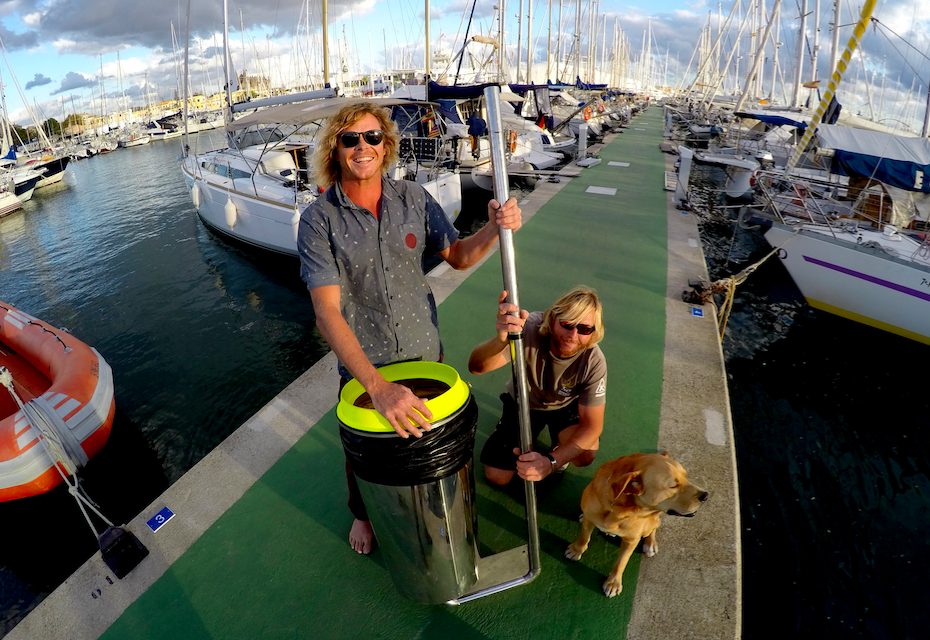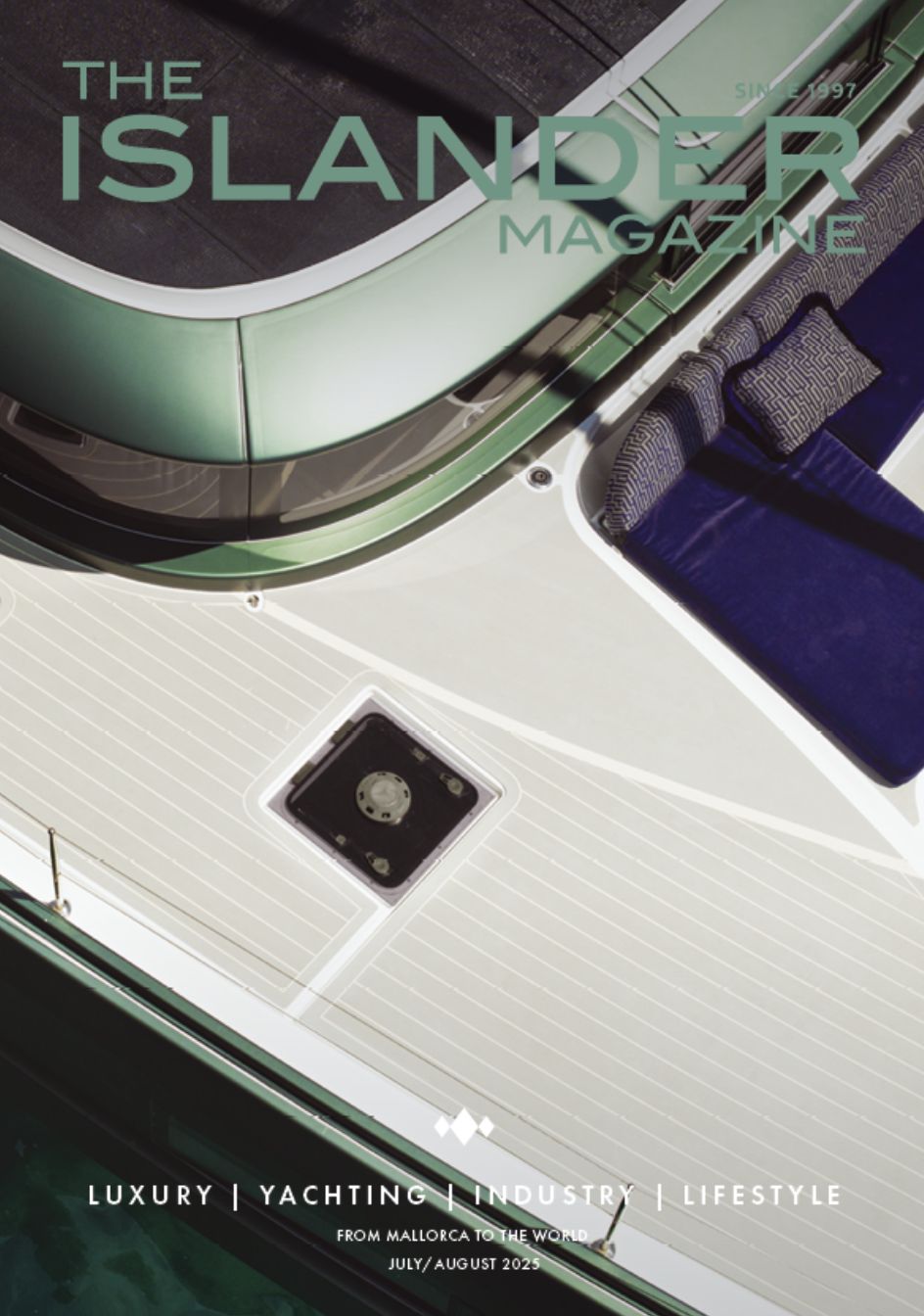Taking a walk along beach is something most of us enjoy, regardless of the weather. But whether
you’re on a deserted island or a holiday resort in the Costas, if you take a good look around you’ll
see just how much garbage litters the sand and the sea.
Plastic bags and bottles are everywhere and pretty much all of it will be pulled into the ocean at the
next high tide.Fish and marine mammals get caught up in the garbage and can’t get free and birds are known to
have choked to death after swallowing polystyrene packing they thought was food.
Attempts to persuade people to dispose of their rubbish responsibly have, for the most part, fallen
on deaf ears and coastlines that were once pristine are becoming nothing more than ugly garbage
dumps.
Andrew Turton is a Mallorca-based Australian who’s been building and racing yachts all his life and
he got so sick of seeing harbour after harbour clogged with oil and trash that he decided to invent a
device that would clean up the mess that other people had left behind once and for all.
“I started basically with a wheelie bin. I put it in the water, attached a pump to it and sucked all the
water out of it. It took a while to figure out how to do it and i’ve made a couple of different versions”
Four years and several prototypes later Andrew and his business partner, Pete Ceglinski, are
ready to launch the Seabin.
It’s a device that works in extreme temperatures and is capable of collecting floating rubbish, oil,
fuel and detergents – 24 hours a day, 365 days a year. It’s easy to install too.
“It’s basically bolted to a floating pontoon so that it goes up and down with the tides and it’s easy to
access. A pump funnels water and floating rubbish into the device. The water is sucked through
the Seabin, and the garbage stays in the special catch bag inside. The water is then pumped back
into the ocean but first it goes through an oil-water separator to filter out fuel and scum.”
The Seabin does have to be maintained regularly but it’s a pretty straightforward process. The
rubbish that’s collected in the catch bag has to be emptied out at least once a day – then once a
month the barnacles have to be cleaned off the outside of the Seabin to stop them blocking the
device.
Andrew and Pete carried out extensive tests on the Seabin at Real Club Nautico in Palma de Mallorca
and besides ironing out any technical issues they also made sure that the device wouldn’t harm the
fish in the harbour. Although apparently the fish do like to pick bits of food off the outside of the
Seabin.
Putting the Seabin into production will cost money, and how much Andrew and Pete can raise will
determine how many they can make and more importantly what materials they can use. They are
using the Crowd Funding website “Kickstarter” to hopefully raise the funds.
“We need around €150,000 to make about 100 Seabins out of rotary moulded plastic which will be
made from recycled granules. We could make it out of eco-friendly fibreglass, he says, but the
rotary moulded plastic would be our first choice.”
The lifespan of a Seabin is expected to be around 10 years and the aim is to lease each one for
€1,000 a quarter with replacement bins supplied as and when required. Plugging it into harbour
power will cost roughly €18 a month for each bin.
As far as distribution goes, Andrew and Pete are going global. They want factories all over the
world to manufacture the bins and plan to supply them with the tooling and drawings which they will need to build the Seabin locally.
At the heart of this business is a deep rooted concern for the environment. Andrew says both him
and Pete are determined to make people more responsible and they intend to use some of their
funding to get kids involved in the project.
“We really want to make people aware of what’s going on in their oceans, so we plan to get
schools involved with this project, probably through field exercises at the harbour. By tracking
what’s in the bin they’ll be able to determine whether it’s coming from their local streets or from
overseas and we hope that by showing them how much garbage ends up in the ocean they’ll be
more responsible when they’re getting rid of their own rubbish.”
For Andrew, developing the Seabin in Mallorca was a no-brainer. He first fell in love with the
culture, the people and the food of Spain many years ago when he moved to Valencia in 2006 to
prepare for the 2007 America’s Cup. But his heart now belongs to Palma and living here makes
good business sense too because Palma is the centre of Europe’s marine industry and has quick
and easy access to major shipping ports across the world.
For Pete and Andrew this is just the beginning. They’re already developing a portable model of the
Seabin that has a submersible pump and uses 48 volts instead of 220. That means it can run off
boat power or a generator on the boat and storage won’t be a problem because they’ve worked out
a way to attach it under the boarding platform of the boat so it can be used in any harbour.
For Andrew this project is not just about the ocean, it’s about educating people and driving home
the message that we can all do something to protect the environment for future generations.
One of the biggest problems is that a great deal of the rubbish that people throw into the streets
ends up in the ocean. So, by being more conscious of what’s going on around us, we could all
make a difference.















0 Comments